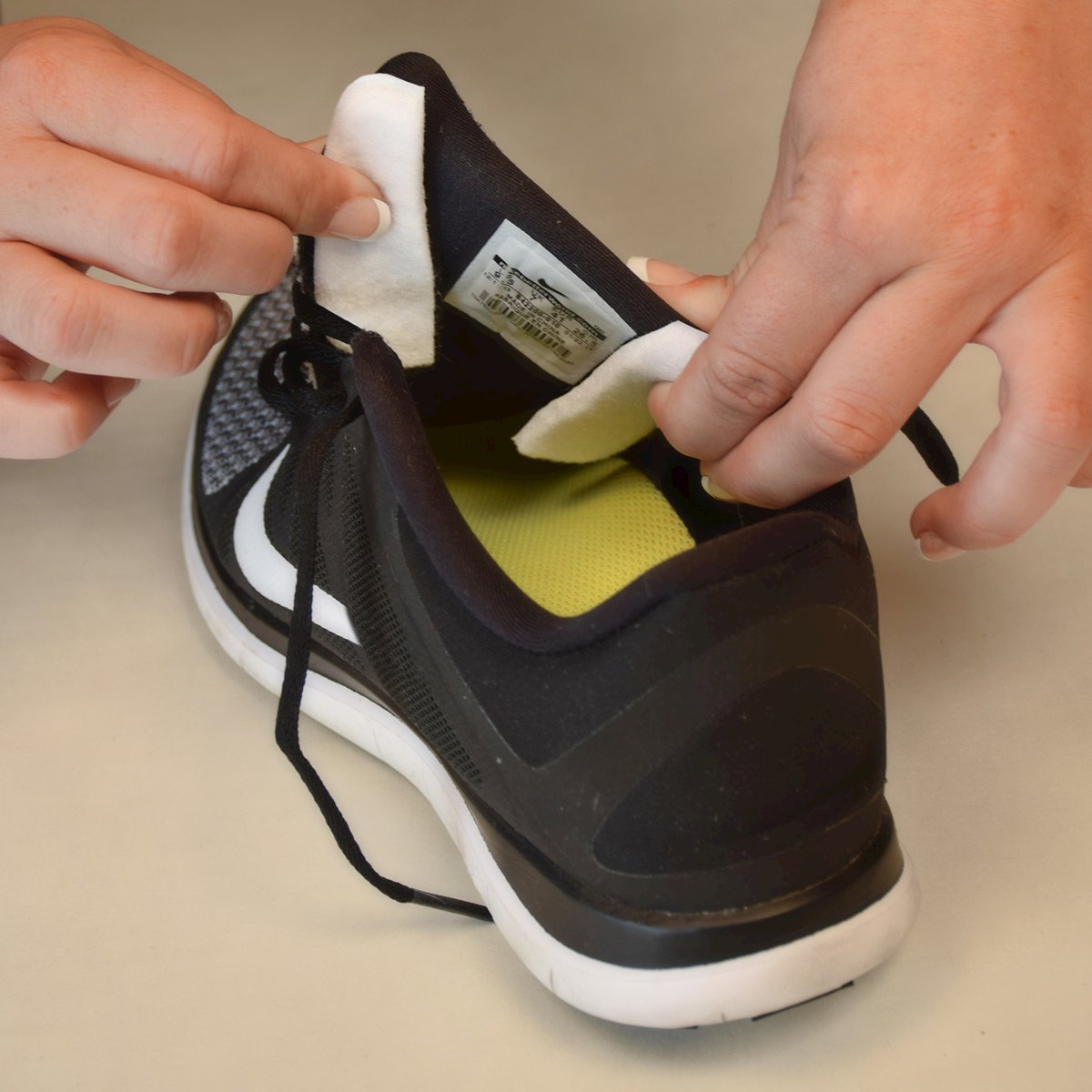One of the oldest shoe fitting tricks is the use of a tongue pad. Tongue pads are used to snug the shoe. Tongue pads are placed under the 'throat' of the shoe. The throat is the area of a non-laced shoe that would meet the top of the arch. In laced shoes, there's often an adjustable tongue that protects the top of the foot from the laces of the shoe.
My heel slips - tongue pads
We had a question from a customer this week who asked what they could do to manage side to side slipping of the heel in their shoe. They said that they had unsuccessfully used heel grips and were looking for another alternative.
One of the oldest shoe fitting tricks is the use of a tongue pad. Tongue pads are used to snug the shoe. Tongue pads are placed  under the 'throat' of the shoe. The throat is the area of a non-laced shoe that would meet the top of the arch. In laced shoes, there's often an adjustable tongue that protects the top of the foot from the laces of the shoe. Placing one or more tongue pads on the underside of the tongue of the shoe (or the throat in non-tied shoes) will effectively push the foot back into the heel of the shoe. The use of tongue pads can make a significant change in the fit of the shoes.
under the 'throat' of the shoe. The throat is the area of a non-laced shoe that would meet the top of the arch. In laced shoes, there's often an adjustable tongue that protects the top of the foot from the laces of the shoe. Placing one or more tongue pads on the underside of the tongue of the shoe (or the throat in non-tied shoes) will effectively push the foot back into the heel of the shoe. The use of tongue pads can make a significant change in the fit of the shoes.
But side to side motion in the heel? In this case, we recommended the use of a tongue pad trimmed to fit the heel. One tongue pad is applied to the medial side (inside) of the heel while another is applied to the lateral aspect of the heel. And a third tongue pad is applied where? You guessed it, under the tongue of the shoe to push the foot back into the heel.
Another alternative for this customer would be to just go with the sloppy fit. What I mean by this is that some shoes are specifically designed to have a sloppy fit in the heel. Clogs, whether open or closed are specifically designed to have the heel slip. So with the use of a clog, you don't need to worry about snug fit or the use of a tongue pad.
Like they say, "if the shoe fits..."
Jeff
Jeffrey A. Oster, DPM
Medical Advisor
Myfootshop.com
Updated 12/27/19












